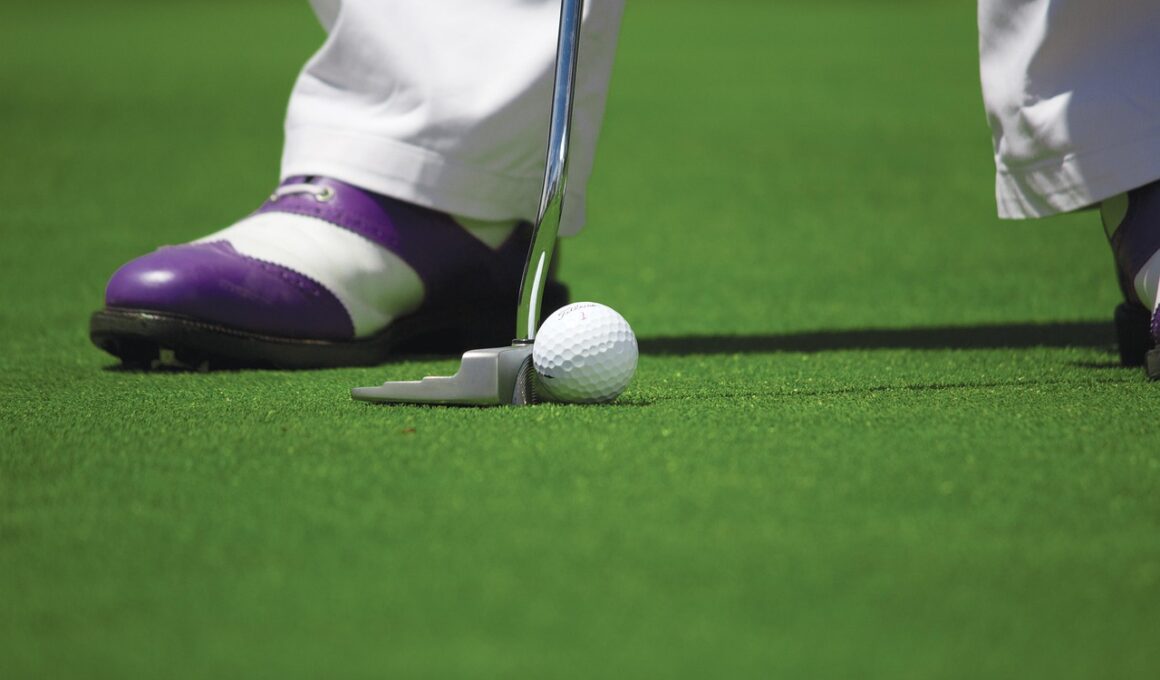Speed Drills for Enhanced Power
Improving your swing mechanics in golf requires a blend of strength and technique. Speed drills are a great way to build this essential quality, enhancing both your swing efficiency and the power generated. Focus on exercises that target your core, as well as your upper and lower body. Traditional drills like the “Overspeed Training” can be very beneficial. Here are some key components to include in your regime:
- Dynamic Stretching: Engage in routines to prepare your muscles for explosive movement.
- Weighted Club Swings: Use a heavier club for increasing strength and speed.
- Resistance Bands: Provide resistance while mimicking your swing mechanics.
- Plyometric Exercises: Incorporate jumps or explosive movements to develop fast-twitch muscle fibers.
Remember, the goal of these speed drills is not only about swinging harder but also about maintaining proper mechanics throughout your practice sessions. Engage regularly to ensure steady improvement and increased performance on the course.
Implementing a Structure for Effective Training
To maximize the benefits of your speed drills, creating a structured training program is essential. This program should incorporate various exercises that enhance flexibility, coordination, and muscle strength. Plan sessions to begin with warm-ups, focusing particularly on your shoulders and hips. Follow this with your selected speed drills targeting explosive power. Another useful tip is to incorporate feedback mechanisms like video analysis or coaching sessions. This ensures that you maintain correct posture and mechanics while swinging.
- Session Frequency: Aim for at least three sessions weekly to see real progress.
- Recovery Time: Ensure you have enough recovery time between workouts to prevent injuries.
- Goal Setting: Set achievable goals to track your speed and power gains in practice.
Ultimately, the combination of these elements will enhance your overall performance in golf, making you a more powerful hitter.
Integrating Power Hitting Techniques
Integrating techniques specifically designed for power hitting can further improve your consistency and control. The central focus should be on the kinetic chain, ensuring that energy transfers smoothly from the ground up through your body. Each segment of your swing should add to the overall force generated. Consider these techniques:
- Foot Placement: A solid stance lets you harness maximum power from your legs.
- Hip Rotation: Allow your hips to fire through the swing, increasing your torque.
- Follow-Through Mechanics: Properly finish your swing to ensure you’ve used all available energy.
Modify these elements during your speed drills, continuously perfecting them for optimal results. Remember that repetition is key; practice these movements until they become second nature. Additionally, be patient and deliberate with each session. Great hitters don’t just happen—they are built through smart practice and focused effort.
Utilizing Technology for Improvement
Using technology can significantly enhance your training experience and results. There are many tools available today that allow you to analyze your swing and track progress over time. Launch monitors, swing analyzers, and even smartphone apps can provide invaluable insights into your performance. By incorporating technology into your routine, you can fine-tune your mechanics with precision. Here are some technological tools you can consider:
- Launch Monitors: Analyze ball speed and launch angles.
- Swing Analyzers: Get real-time feedback on swing path and speed.
- Fitness Trackers: Monitor physical performance metrics.
When used correctly, these tools can highlight specific areas that need improvement. Capture your data and use it to adjust your training program. This approach not only helps pinpoint weaknesses but can also reinvigorate your training, keeping you motivated and engaged.
Working on Mental Aspects of Power Hitting
In addition to physical training, the mental side of golf cannot be overlooked. Power hitting is as much about mental strength as it is about technique and fitness. Developing mental resilience helps you stay focused even under pressure. Visualization techniques can be extremely powerful for enhancing your power hitting mindset. Picture yourself executing perfect swings consistently. Strategies to enhance mental focus include:
- Pre-swing Routine: Establish a consistent routine before each swing to build confidence.
- Mindfulness Exercises: Practice being present in the moment to avoid distractions.
- Positive Affirmations: Encourage a positive mindset that builds self-belief.
Integrating these mental strategies into your training will support your physical development and provide a holistic approach to improving your game.
Tracking Progress for Sustainable Improvement
Keeping track of your progress is crucial for long-term improvement in power hitting. Regularly assessing performance aids in understanding what aspects of your training are effective and which need adjustment. Consider ways to monitor various metrics, including swing speed, driving distance, and accuracy. Logging these metrics daily or weekly can highlight trends and areas that require more dedicated effort. Use a journal or app to document your achievements consistently. Here are some tips for effective tracking:
- Follow Consistent Metrics: Stick to the same measurements for comparison over time.
- Set Milestones: Create periodic goals that measure specific achievements.
- Evaluate and Adjust: Analyze your data and adjust your training focus accordingly.
This data-driven approach allows you to make informed decisions about your training, ensuring that your time and effort yield the best results.
Emphasizing the Importance of Recovery
Lastly, remember that effective recovery is just as vital as your training sessions. Proper recovery allows your body to heal, rebuild, and ultimately perform better. Golfer’s wellness routines should not be neglected. Incorporating practices such as stretching, massage, and rest days can significantly enhance performance. Recovery strategies need to be individualized, depending on your intensity of training and personal fitness levels. Here are some effective recovery techniques:
- Active Recovery: Engage in low-impact activities to relieve muscle tension.
- Hydration and Nutrition: Properly eating and hydrating post-training supports muscle recovery.
- Sleep Quality: Ensure you prioritize sleep to allow your body to rejuvenate.
By emphasizing recovery within your training program, you optimize your power hitting capability, making future workouts more effective and fruitful. Reap the benefits of a well-rounded approach to golf fitness and enhancement.
Conclusion: Achieving Power Hitting Goals
Incorporating these strategies into your golf training can pave the way towards significant power hitting improvement. Recognize that it is not merely about swinging harder, but about the intricacies of your technique, fitness level, and mental resilience. Commit to the journey, and gradually you’ll witness increased power and consistency in your swing. Engage fully in speed drills, embrace technological tools, and hone your mental game. Monitoring and adjusting your progress and making time for recovery will ensure you’re continually growing. Power hitting is a long-term pursuit, but with dedication, you’ll achieve remarkable enhancements in your game. Outperform your previous levels and enjoy the remarkable satisfaction of comprehensive growth as a golfer. Take pride in the process and remain focused on your goals; success in golf fitness for power hitting is undoubtedly within reach, given the right attitude, effort, and perseverance. Stick to this plan and watch your game reach new heights in no time. There’s no ceiling on improvement—stay motivated and keep swinging!


